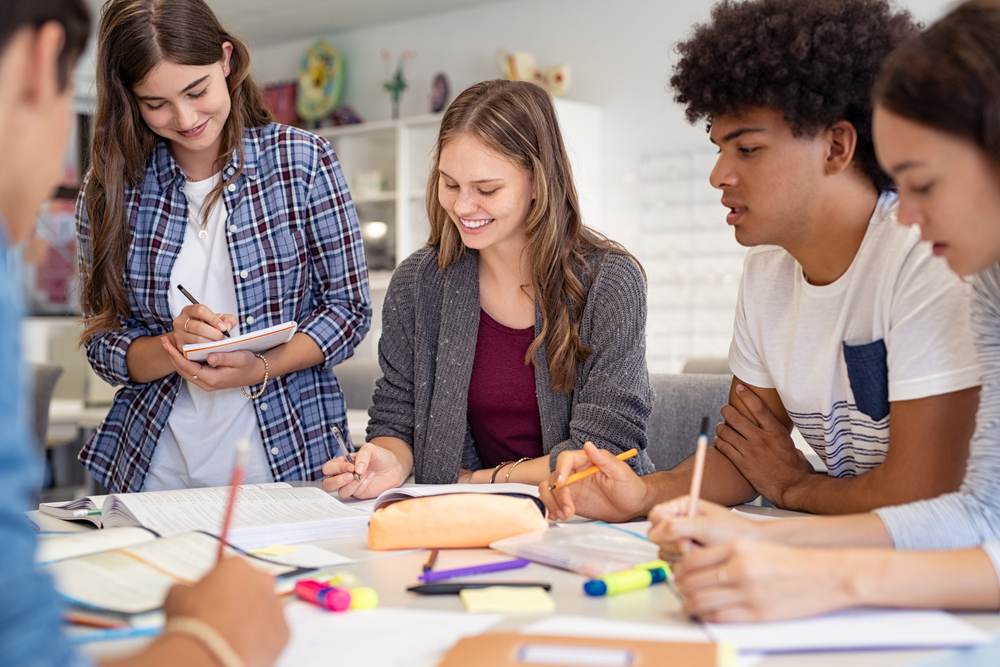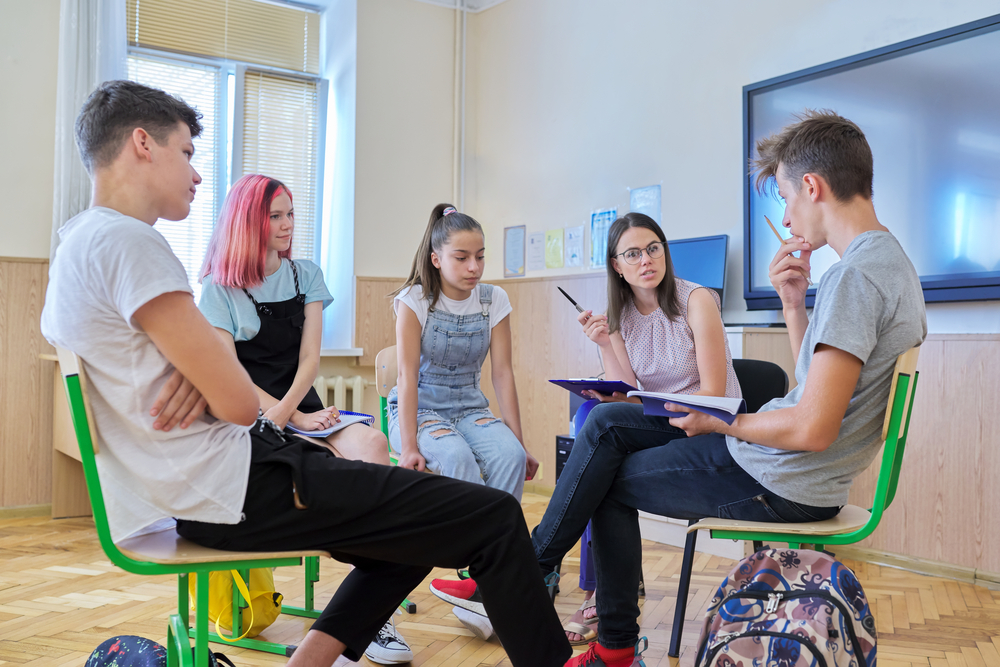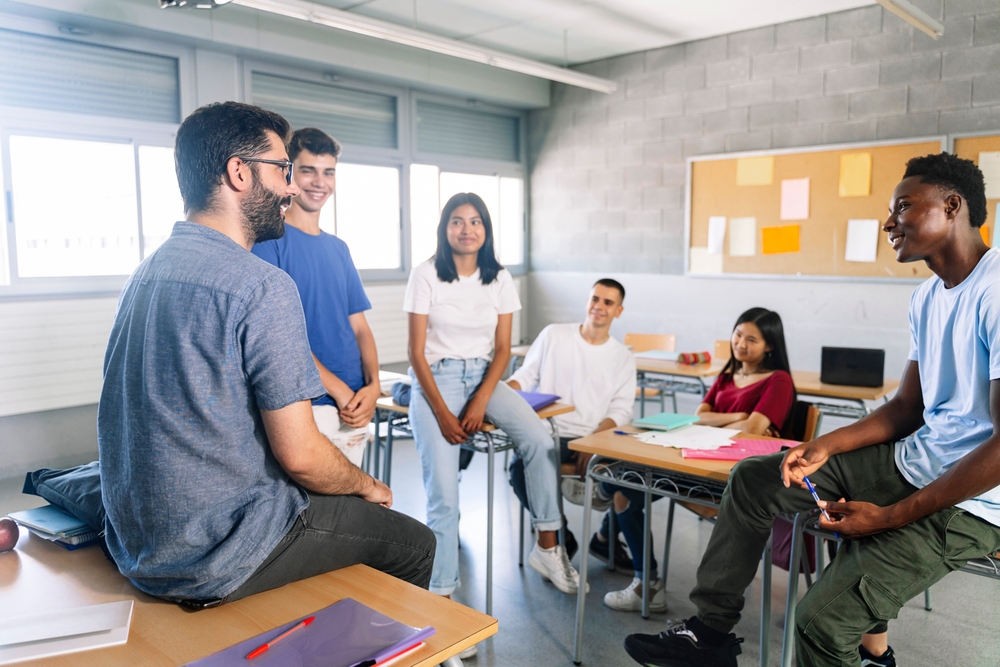Learning Framework
The Learning Framework is more than just a collection of ideas or activities, more than just a toolkit or bank of resources. The Learning Framework is an umbrella structure that outlines an approach to teaching and learning based upon the premise that learning is an active process and that ‘to learn’ students need ‘to do’ and most importantly understand that learning is a result of thinking!
To make sense of the information that comes their way students need to communicate, analyse, synthesise, problem-solve, create and reflect. The topic and subject matter is up to you – the framework provides suggestions as to how to present this information to students to help actively engage with the subject matter.
Learning is not a linear process – this understanding has informed how we have developed the Learning Framework. Within one class you may move through a number of different stages or modes of the learning journey. So feel free to mix and match activities to suit the needs of your subject, students and stage of learning. The creative activities have been categories into 5 distinct learning modes:
Energise
Introduce
Explore
Conclude
Reflection
At its core, the Learning Framework embraces the notion that education is not a passive transfer of information but an immersive experience that nurtures critical thinking and deep understanding. It recognizes that the best way to learn is by actively participating, by rolling up our sleeves and diving into meaningful tasks and challenges.
By adopting the Learning Framework, we hope to empower students to become active participants in their own education. We wish for this framework to help you as a teacher to create an environment that sparks curiosity, encourages exploration, and ignites a passion for learning. Instead of simply absorbing facts and figures, students are prompted to think critically, analyse, question, and connect ideas.

The framework emphasises the importance of hands-on experiences and practical application of knowledge.
Through various activities, projects, and real-world scenarios, students actively apply what they have learned, bridging the gap between theory and practice. This approach fosters a deeper level of comprehension and enables students to see the relevance and value of their learning in the world around them.

Moreover, the Learning Framework recognises the significant role of reflection and metacognition in the learning process.
Students are encouraged to reflect on their thinking, evaluate their progress, and make connections between their new knowledge and prior experiences. This metacognitive awareness cultivates self-directed learners who possess the skills and mindset necessary for lifelong learning.
In summary, the Learning Framework is a comprehensive approach to education that transcends traditional methods. It places students at the centre of the learning process, engaging them actively and inspiring them to think deeply and critically. By embracing this framework, we empower students to embark on a meaningful educational journey, where learning becomes a vibrant, transformative experience.
The aim of the Learning Framework is to help students learn – the extent to which the potential of an activity is effective is dependent on your professional insight and understanding of the students in your classroom and the facilitation of the activity in question. All of the activities have been developed and taught by teachers in Ireland, Croatia, Denmark, Italy and Greece. Some activities will suit your subject and teaching style and others may not. The purpose of the Learning Framework is to inspire and support you, as you and your students explore. The Learning Framework outlines different learning modes. There is no ‘right way’ to use the framework; it’s about sensing which activities match students’ needs and their current learning journey.

As a teacher, the Learning Framework provides you with a tool to enhance your teaching practices and create engaging learning experiences for your students.
This framework offers various levels of immersion and engagement, allowing you to adapt and tailor it to your specific context and the unique needs of your students. With the Learning Framework, you have the freedom to shape, mould, and customise its implementation. It is made to be integrated across different subjects and school systems, accommodating diverse curricula and educational settings.
The flexibility of this framework empowers you to explore different permutations and variations, enabling you to apply it at various levels. Whether you want to structure an individual activity, design a comprehensive lesson, develop a unit of learning, or even shape an entire term, the framework provides a versatile structure to guide your instructional planning. Remember, you are the expert in your classroom, and the Learning Framework is a tool that empowers you to unleash your creativity, adaptability, and pedagogical expertise. As you familiarise yourself with the framework, the goal is for you and your students to take ownership of the suggested activities and resources within it. This ownership allows you to adapt and personalise the framework to ensure its alignment with your classroom dynamics, teaching style and student interests.
Sometimes the energy in the classroom can become low, when this happens it often helps for the students to connect with and activate their bodies and minds – to bring about renewed energy back in the room. The energiser activities can be used in the classroom at any stage of the learning journey. If the students seem unengaged or tired, then it might be time for an ‘energiser’ activity. Some of the activities might be useful to use at the beginning of a class to get their creative juices flowing.
Choosing when there is the need for an energiser activity in the classroom does not only have to be the responsibility of the teacher but can also be a responsibility of the students. Asking questions such as; Is the energy in the classroom low? is a great way to give the students the chance to start noticing the atmosphere in a classroom.
The mindsets and skills practised in the activities connected to this part of the framework are:
- Mind & Body Connection
- Listening to and Seeing the Needs of Yourself and Others
- Building a Mentally and Physically Healthy Learning Environment
In a dynamic classroom environment, it’s natural for the energy levels to occasionally dip, making it challenging for students to fully engage in the learning process you have prepared for them. However, there are effective strategies to reignite the classroom energy and rejuvenate student participation. One powerful approach is to encourage students to connect with and activate their bodies, thus bringing renewed energy back into the room. This aspect of the framework emphasises the need for students to step away from their tired minds and embrace a more embodied experience.
Energiser activities can be seamlessly integrated at any stage of the learning journey. If you notice that your students appear unengaged or tired, it might be the perfect time for a well-designed energiser activity.
While the responsibility of choosing energisers typically falls on you as a teacher, it can also be an empowering opportunity for students. Encouraging them to reflect on questions like, ‘Is the energy in the classroom feeling heavy?’ allows them to become more attuned to their own and others’ needs.
The activities suggested for the ‘Introduce’ mode of the learning journey can be used to introduce a new concept, topic, project, unit of learning and/or subject. When introducing the students to something new, they may not always immediately see the importance or relevance of this new concept, topic, project etc. therefore, the activities in this part of the framework provides tools for getting students on board. In short, the activities connected to this mode of the learning framework help students become familiar with new ideas and information.
The mindsets and skills practised in the activities connected to this part of the framework are:
- Understanding a subject
- Building a psychologically safe learning culture
- Finding motivation
- Communication
When you introduce your students to a new subject, school term, or project, they may not immediately grasp its relevance. We believe it’s crucial to engage students in various activities that familiarise them with the learning journey and ignite their motivation to explore the subject, projects, or school term.
Here are a few reasons why and when this part of the learning journey might come in handy:
- Relevance and Context: Introducing a new topic helps establish its relevance and importance in the students’ lives. By providing context and explaining how the topic connects to real-world situations, you can help students understand why it is worth exploring and how it relates to their interests and aspirations.
- Building Curiosity: Introducing a new topic creates an opportunity to pique students’ curiosity and ignite their desire to learn more. By presenting intriguing facts, thought-provoking questions, or captivating stories related to the topic, you can stimulate their inquisitiveness and create a sense of wonder that drives their engagement.
- Fostering Ownership: Introducing a new topic allows students to take ownership of their learning journey. By involving them in the process, encouraging their input, and valuing their perspectives, you empower them to become active participants in shaping their educational experience. This sense of ownership enhances their motivation and commitment to the learning journey.
- Building Relationships: Introducing a new topic provides an opportunity to build strong teacher-student relationships. By showing enthusiasm, care, and genuine interest in the students’ learning, you establish a supportive and trusting environment. This positive rapport enhances their motivation and willingness to actively engage in the learning journey.
Overall, introducing a new topic to a class of students is essential for creating motivation, curiosity, and a sense of purpose. It lays the foundation for deeper learning, generates excitement, fosters ownership, and builds relationships. By effectively introducing new topics, educators can inspire students and set them on a path of meaningful exploration and growth throughout the learning journey.
Learning through doing, thinking and engaging with new ideas and information is an essential part of understanding subject matter on a deeper level. The activities included in this stage or mode of the learning journey support students to actively engage with the subject matter. In order to properly understand a subject, students will therefore need to not only be using their heads but also their hands, and that is what this part of the framework is all about.
The mindsets and skills practised in the activities connected to this part of the framework are:
- Proto-typing
- Daring to fail fast, in order to learn faster.
- Co-creation
- Creativity
- Innovation
Explore is about adapting a hands-on learning approach. Hands-on learning is an incredibly effective approach because it taps into multiple aspects of the learning process and enhances overall understanding.
Here are a few reasons why “hands-on learning” works:
- Active Engagement: When students actively use their hands and engage in tangible experiences, they become active participants in the learning process. This active engagement promotes deeper learning as it encourages students to think critically, make decisions, and solve problems in real-world contexts.
- Sensorimotor Connection: Hands-on activities create a strong sensorimotor connection, where students combine physical actions with sensory perceptions. This connection helps reinforce learning by associating abstract concepts with concrete experiences, making them more memorable and easier to comprehend.
- Meaningful Context: Hands-on learning provides a meaningful context for students to connect with the subject matter. By directly manipulating objects, conducting experiments, or creating something tangible, students can see the practical application and relevance of what they are learning. This context helps foster a deeper understanding and motivation to explore further.
- Multi-Sensory Learning: Engaging multiple senses simultaneously enhances the learning experience. Hands-on activities often involve touch, sight, and sometimes even sound or smell, stimulating various sensory pathways. This multisensory approach enhances memory retention, as different sensory cues can trigger recall of information later on.
- Personalisation and Autonomy: Hands-on learning allows students to personalise their learning experiences and take ownership of their education. They can explore their own interests, make choices, and direct their learning path within the framework provided. This autonomy promotes intrinsic motivation and a sense of empowerment, leading to more meaningful and self-directed learning.
- Collaboration and Communication: Hands-on activities often involve collaboration and communication among students. Working together on projects or experiments encourages teamwork, problem-solving, and effective communication skills. Students learn from each other, exchange ideas, and develop important social and interpersonal skills along the way.
The activities included in this stage or mode of the learning journey encourage students to communicate, evaluate and summarise what they have learned. Students review what they have learned so far and identify the skills they have developed.
The mindsets and skills practised in the activities connected to this part of the framework are:
- Sense making
- Clear communication
- Celebrating and acknowledging accomplishment
This part of the learning journey is about communicating and summing up what you have learned together by looking at what subject, school term, project period etc. you and the students have just gone through together. It is the space you take to look at what has been created by all of you, and look at what you now collectively know.
Concluding a topic typically involves activities such as summarising key points, reviewing achievements, and showcasing final projects or presentations.
Concluding a topic is about bringing closure to the specific content and activities, emphasising the knowledge acquired and the achievements made. It aims to provide a sense of completion and celebrate the learning outcomes.
In summary, concluding a topic is important as it consolidates knowledge, requires clear communication, celebrates achievements and encourages collaboration. It provides a sense of closure while paving the way for ongoing learning and growth. By engaging in effective conclusion activities, you can support your students in synthesising their learning and developing a deeper appreciation for the subject matter.
This is an important and often overlooked part of the learning process or journey. The activities included in the reflection mode encourage students to think about not just what they have learned but also how (the process) they learned, particularly focusing on the skills and strengths they developed – so they can bring this with them and apply it to future learning. This is a key step to encourage students to become independent learners.
The mindsets and skills practised in the activities connected to this part of the framework are:
- Reflection
- Metacognition
- Critical thinking
- Anchoring learning
- Listening
- Critical thinking
While concluding a topic and reflecting upon a learning process are closely related, they serve distinct purposes in the learning journey. Concluding a topic involves summarising and wrapping up the specific content, concepts, and activities related to a particular subject, school term, project period, or learning unit.
Reflecting upon a learning process involves a broader examination of the entire learning journey, beyond the scope of a specific topic. It is a metacognitive activity that encourages students to analyse and evaluate their learning experiences, strategies, and growth throughout the learning journey.
Reflecting on the learning process involves self-assessment, identifying strengths and areas for improvement, and considering the effectiveness of various learning approaches.
You can look at it in the following way: Concluding a learning journey is looking at WHAT (results) has been created in terms of assignments, pages red, small subject related prototypes/projects made, activities done etc. Reflection is looking at HOW (process) it has been for the students to have gone through the learning journey together, and what they are taking with them moving forward.
Here are examples of a few questions that might be relevant to ask the students in the reflective part of the learning journey:
- What worked well during this learning period, and why? What was challenging? What did you learn about yourself and you classmates?
- What is different within you? How do you understand the subject now?
- What is something that you did not expect to learn from this subject? What surprised you about this topic?
- How do you now see that this subject is connected to the other subjects that we have gone through?
- Have you learned something new about your classmates? What is different with you in relation to them now?
